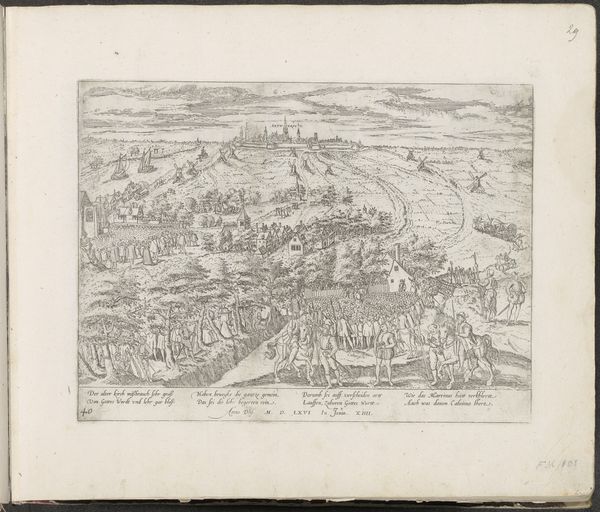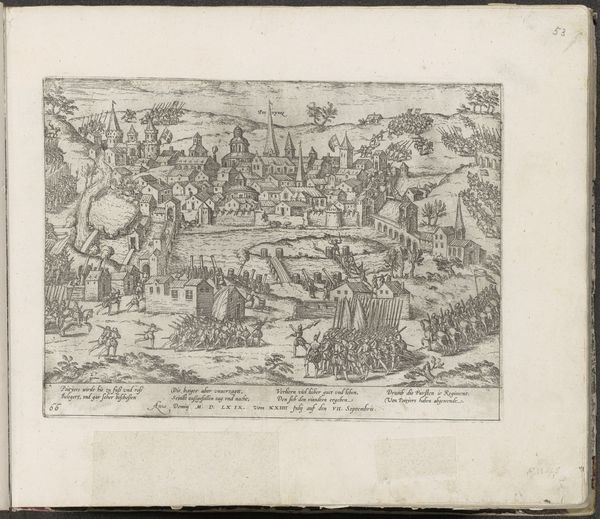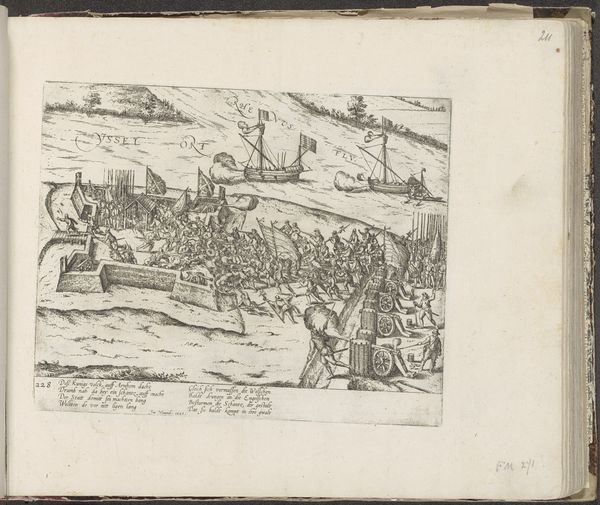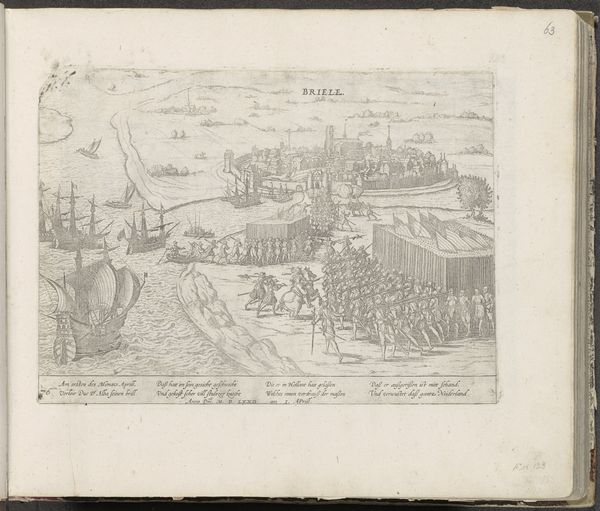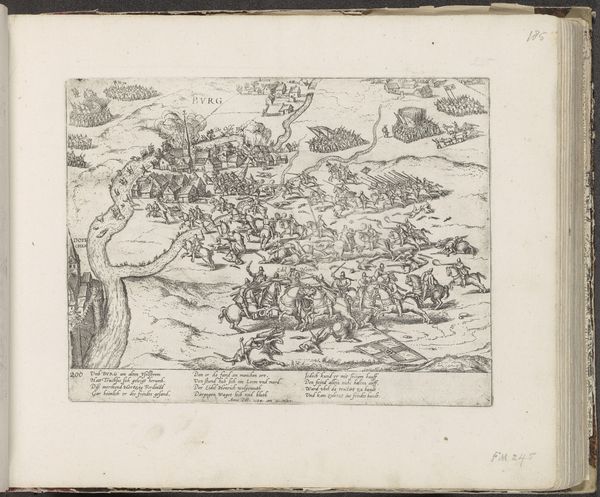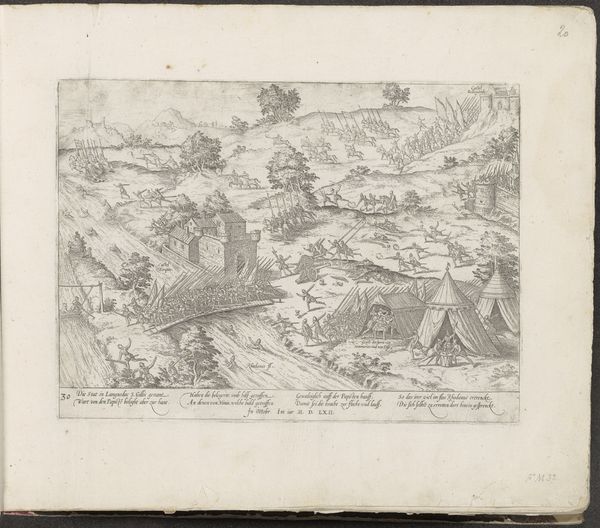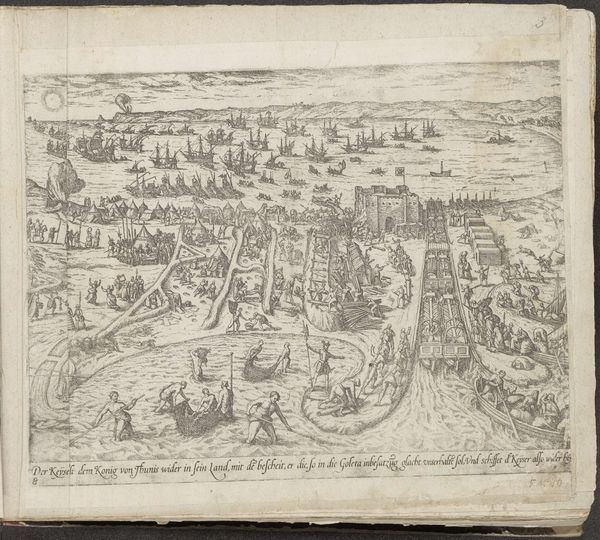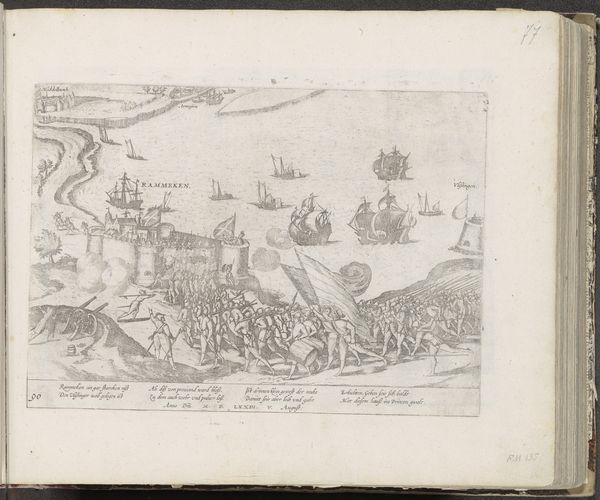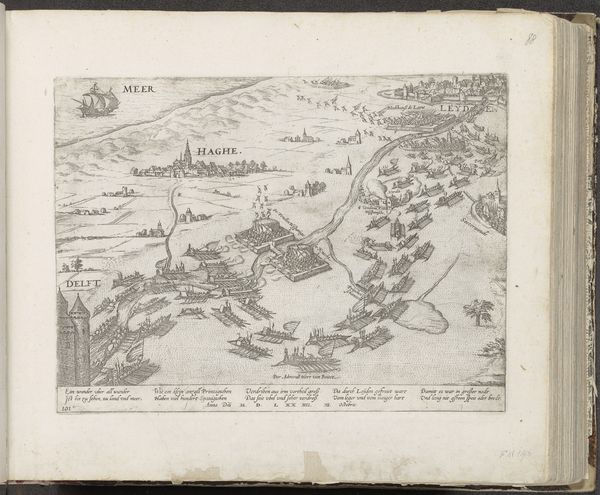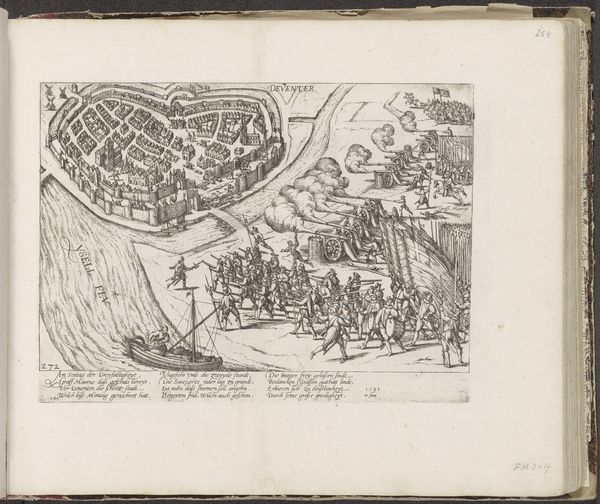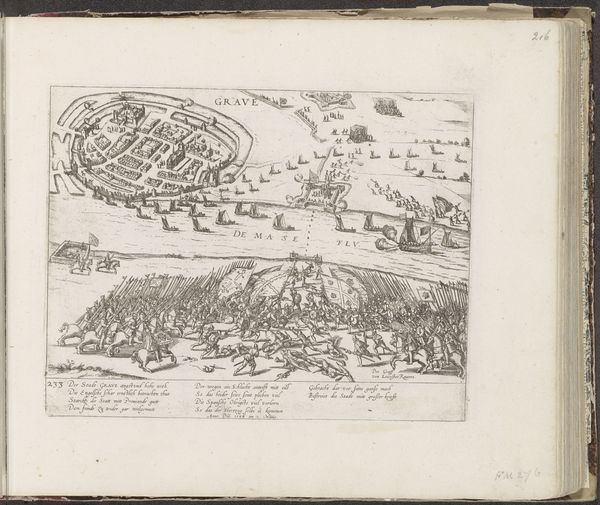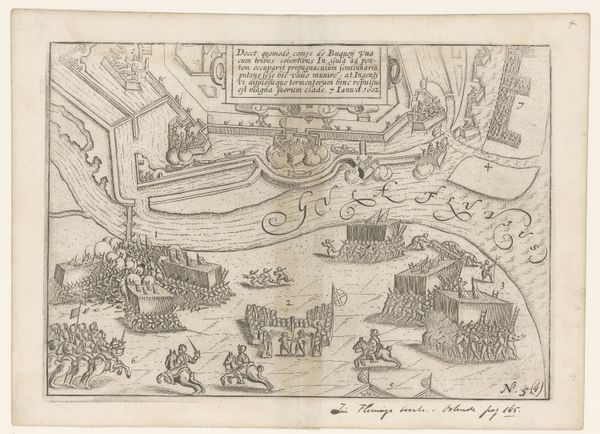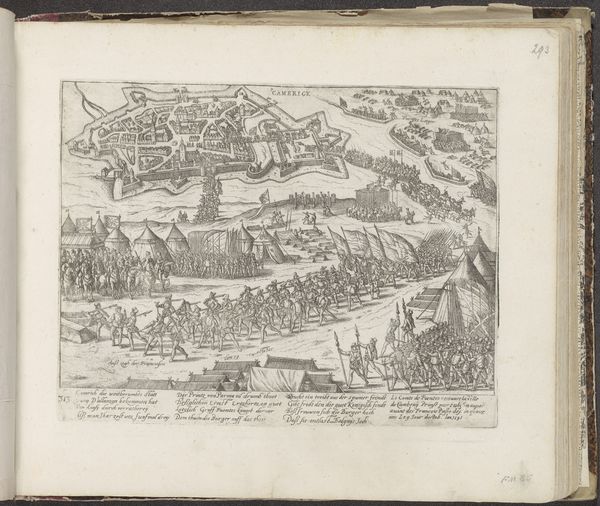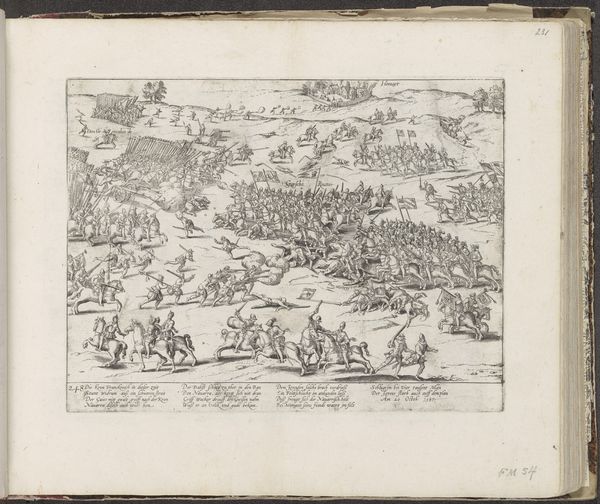
Beleg van Oostende: de vredesonderhandelingen op 23-25 december 1601 1601 - 1615
0:00
0:00
print, engraving
#
medieval
#
pen drawing
# print
#
landscape
#
history-painting
#
engraving
Dimensions: height 171 mm, width 241 mm
Copyright: Rijks Museum: Open Domain
Editor: This print, dating roughly between 1601 and 1615, depicts the Siege of Ostend: the peace negotiations on December 23-25, 1601. It's attributed to an anonymous artist and is currently held at the Rijksmuseum. It strikes me as incredibly detailed, almost like a historical infographic…but what exactly are we seeing here? Curator: Yes, isn’t it remarkable? It's as though someone pulled back the curtain on history and offered us a glimpse, a secret whispered in ink. What jumps out to me is how the artist captured not just the physical space of the siege, but the mood, the nervous energy that must have crackled in the air during these tense negotiations. Do you notice the repetition of figures, almost like waves in the sea? Editor: Now that you mention it, I do! Is that repetition a stylistic choice or is it meant to tell us something specific about the scale of the event? Curator: I suspect it's a little of both, you clever thing! Functionally, it's an efficient way of portraying a multitude. But conceptually? It could be whispering about the relentless pressure, the sheer volume of human will and conflict focused on this single point. See how those tiny figures blend together into a single churning mass… what feelings does that conjure in you? Editor: A feeling of inevitability, almost. The idea that individual agency is lost in the sweep of history… But look, despite all this seriousness, there's a dog running around! Curator: Ah, yes! Even amidst the grand theatre of war and diplomacy, life, in its furry, four-legged form, goes on. It reminds us that even historical events are lived and felt on a deeply personal level. History isn't just treaties and tactics, it's the dog chasing its tail, oblivious to the machinations of men. Editor: I love that – it really brings the whole scene to life! Curator: It reminds me to try looking past the documentarian effect, to see what's alive in the old marks that constitute the picture, to imagine myself into the feeling of the people depicted. What did they think? What did they hope for? Editor: It's amazing how much you can find when you stop and really *look*. I'm definitely seeing this piece in a completely new light now. Thanks for sharing your perspective.
Comments
No comments
Be the first to comment and join the conversation on the ultimate creative platform.
